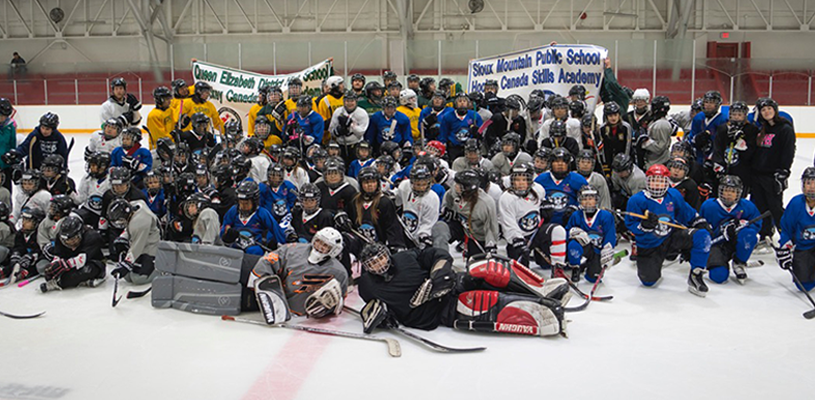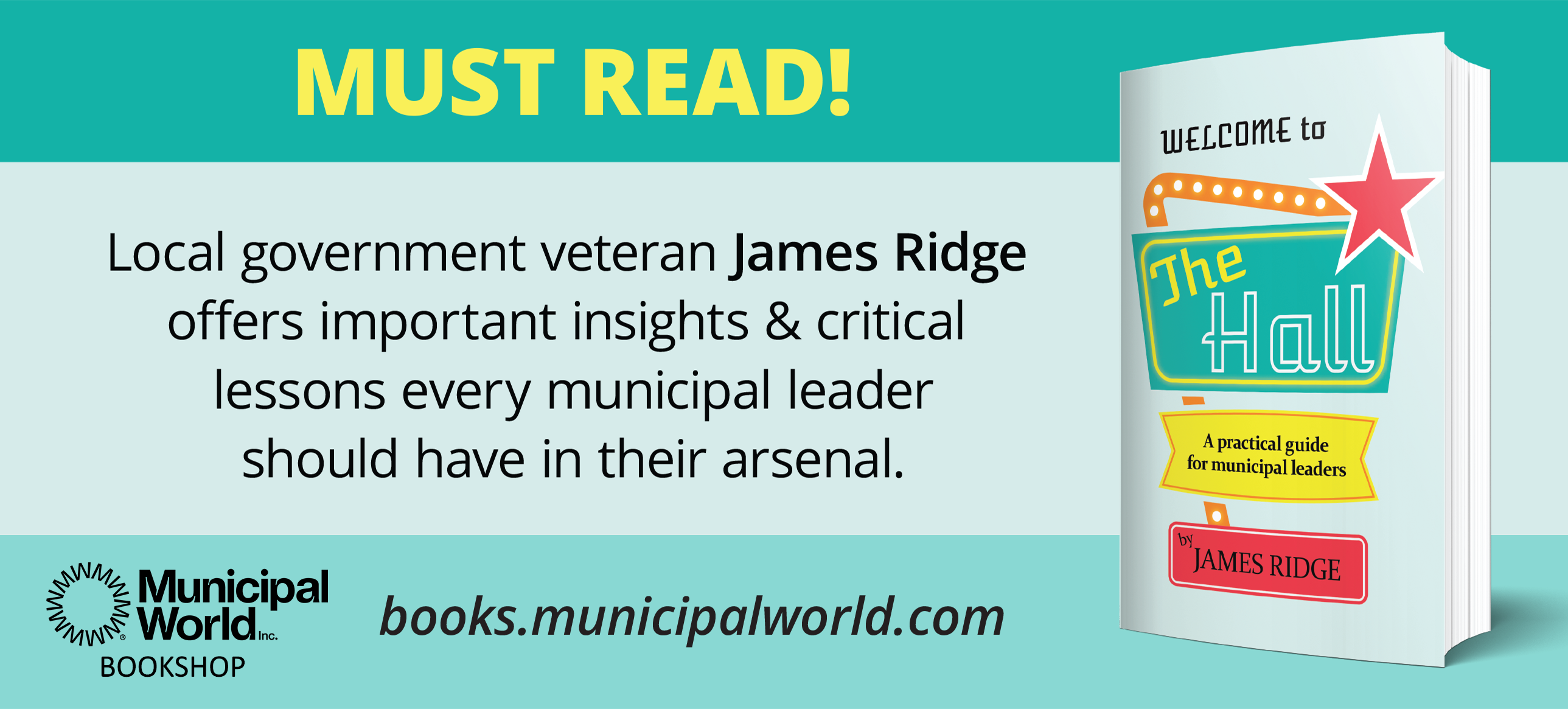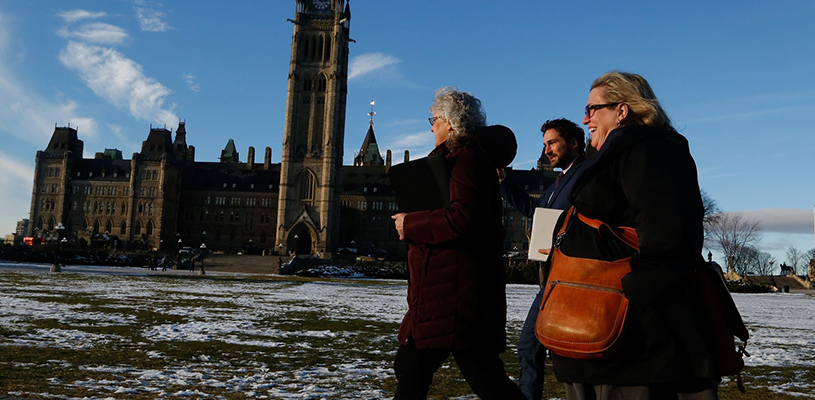The skills for success
 The Hockey Canada Skills Academies in Northwestern Ontario leverage the power of sport to inspire kids to succeed in the classroom.
The Hockey Canada Skills Academies in Northwestern Ontario leverage the power of sport to inspire kids to succeed in the classroom.
Students score big win with Hockey Canada Skills Academy
Municipal World is partnering with Canadian Tire Jumpstart Charities to raise awareness about the program and the value it can bring to communities, and to showcase the power of sport in effecting positive social change. This third in a series of articles emphasizes how sport can be used to impact “neglected” populations, using the Hockey Canada Skills Academies in Northwestern Ontario as a case study.
If you think about the ideal community, there should be certain characteristics that come to mind. Hopefully, words like “engaged” or “inclusive” should be somewhere in the discussion of what that ideal community would look like. While every community strives to engage citizens and provide services for everyone, it takes particular care to ensure that those ideals are achieved and to help prevent individuals or groups from falling through the cracks. In the case of community’s youngest citizens, that responsibility must be treated with the highest importance.
Youth participation in sports can help build life skills – courage, confidence, and teamwork – and, as touched on in the previous article (December 2016, p. 21), participation in sports programs can help build a community’s future leaders. Obviously, it represents a great added value for communities looking to do something to engage their youngest citizens. But, as this month’s case study demonstrates, engaging youth in sports can also provide something much more fundamental and valuable – the desire to succeed in education.
Case Study: Hockey Canada Skills Academy
The Keewatin Patricia District School Board is a geographically large board in Northwestern Ontario, and it faces a unique challenge – namely, the graduation rates in the region are among the lowest in Canada. In addition, students face higher rates of poverty and substance abuse, as well as a decreased desire to engage in their education. The solutions to these problems are complex; but, without a base in education, any efforts to create positive change face even tougher circumstances.
Launched in 2012, the Hockey Canada Skills Academy was introduced to help meet these challenges head on. Twenty-three students at the Beaver Brae Secondary School in Kenora were involved in a program that includes education, on-ice skills, off-ice strength and conditioning training, mental training, and personal and team development. The program replaces traditional physical education class, and gives students the chance to be on the ice during the school day. Actual time on the ice is tied to attendance, participation, and behaviour in the classroom – creating a strong incentive and personal onus for students to re-engage with their education.
The initial implementation was a resounding success – 22 of the 23 students participating in the Skills Academy went on to graduate from high school. Since that point, the program has been expanded – first in 2015 to about 300 participating students, and more recently to nearly 800 students in communities across the district.
As any parent with children involved in the sport knows, hockey fees and equipment can be expensive. With its mandate to remove barriers that prevent kids from being able to participate in sport and physical activity and to help meet the needs of neglected populations, Canadian Tire Jumpstart Charities helped ensure that no child would be left behind. Jumpstart donated equipment to outfit 52 students that otherwise wouldn’t have been able to get on the ice due to financial limitations.
More than just increased graduation rates, the program is already showing striking benefits in other areas. Attendance at one school has been up by 25 percent; and, the relationships between students and teachers are growing, with “teachers” becoming “coaches” (and, in many cases, “mentors”). Further, by capitalizing on the students’ love of hockey through integrating the subject into the more traditional curriculum, teachers are able to further engage the students in traditional “academic” areas more successfully than in the past.
The program is full of success stories, one of which is the case of a grade eight student named Jericho. Before being introduced to hockey, Jericho admits he didn’t care about school, often in trouble and skipping class with older boys. But, his love for hockey gave him a reason to want to come to school every day and the motivation to be engaged in class. Before and after the bell rings, he can be found outside the school practicing his skills. He keeps an orange hockey ball in his pocket at all times, and wants to play in the NHL someday. More importantly, Jericho is on track to be the first person in his family to ever graduate from high school.
“We are incredibly proud of the positive impact the Hockey Canada Skills Academy has had on our students: the chance to play hockey has inspired kids to be engaged in the classroom and set goals both on and away from the rink,” says Sean Monteith, Keewatin-Patricia District School Board Director. “We are grateful to our generous partners who help provide the opportunity to get more kids, who otherwise might not have the chance to play, on the ice.”
Benefits for Years to Come
As important as sport can be in impacting positive youth development, there is no doubt that education is absolutely vital to ensuring success for both individuals and the community. Sports equip kids for life, and by leveraging the power of sport to build a foundation in education, the Keewatin Patricia District School Board is setting their students up for success for years to come.
LANDON FRENCH is President of Canadian Tire Jumpstart Charities, managing Canada’s largest portfolio of community partnerships. Landon holds an MBA from Royal Roads University, and an MA in Canadian Studies from Carleton University. He received the Queen’s Golden Jubilee Medal for his leadership on the design and live television broadcast of Queen Elizabeth’s Golden Jubilee Royal Visit to Canada in 2002. Landon also received the Royal Roads University Chancellor’s Award for Academic Excellence in Public Relations and Communications.
as published in Municipal World, January 2017



